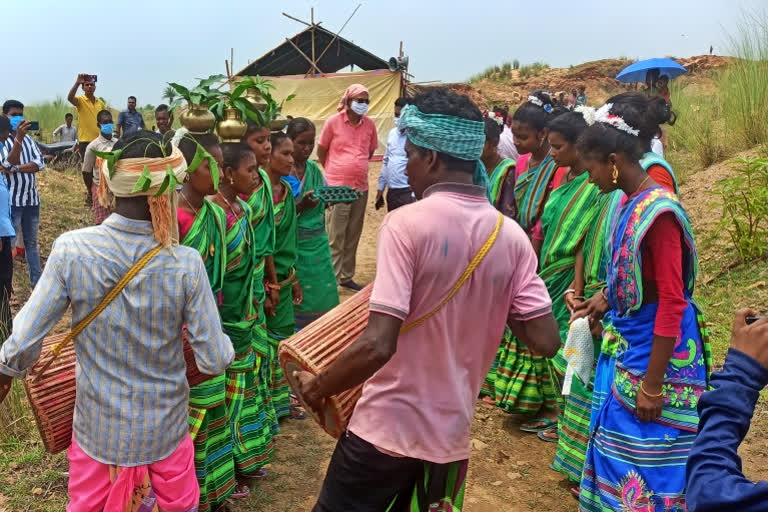Dumka (Jharkhand): Tribal people in India have always been a topic of discussion not only because of their unique culture and tradition but also because of their continuous effort to protect themselves from the so-called advanced sophisticated society. They have protected their custom and their tradition from the external world. Naturally, the lives of these people have always been a subject of interest.
It is true that after the nomination of Draupadi Murmu as the NDA Presidential candidate, the interest in the lives of these tribes has increased to a considerable degree but it is also true that we hardly know about the hardship and suffering of these people who have to struggle all through the day only to manage a square meal.
For a layman, the word ‘tribe’ is restricted to one or two communities which we know but the tribal society is divided into 32 classes. According to Dr Pramodini Hansda, former Pro-Vice-Chancellor of Sido-Kanhu Murmu University, there are 32 classes of tribal in Jharkhand among which Santhal, Munda, Ho, Oraon, Mahli, Birhor, and Khadia are prominent. They are generally divided on the basis of region and languages. Though they have a huge population and are spread over several states as well as countries, the unique aspect of these tribes is that they always try and keep in touch with each other.
Language is another variety that keeps one tribe separated from the other. The linguistic diversity can be best explained when we see that the Santhals speak in Santhali, the Oraon in Kudukh, Mundas in Mundari and the Hos in Khadia. Though there are some similarities among these languages, there is also a uniqueness that makes them exclusive.
Also read: When Santals, the tribe Draupadi Murmu belongs to, fought British and nearly drove them out
If we talk about the sections of the tribal society, then Oraon caste mainly resides in Gumla, Lohardaga and Ranchi in Jharkhand while the Munda community lives in Khunti and Ranchi. The Ho tribes are found in abundance in Chaibasa, Jamshedpur and Seraikela, while the Khadia community is found most in Simdega. In fact, the number of tribal societies is very high in South Chotanagpur, East Singhbhum, West Singhbhum and Santhal Parganas of Jharkhand.
Presently the tribes are leaving the forest and are creating a separate identity in the society. "They are coming out of there and joining the mainstream of the society and making their identity. The people of this society, who used to eat the root of the forest earlier, have also started eating burgers and pizzas,” Dr Hansda said.
Tribals are worshipers of nature. Sohrai festival is considered to be the biggest festival of tribals. At the same time, they also celebrate Karma, Sarhul festivals with great pomp. The special thing about their festivals is that all of them are associated with nature worship. Overall, tribals are worshipers of nature. Another special thing is that they also worship domesticated cattle. The oxen that plough the fields on Sohrai are worshipped. They are decorated attractively.
"These cattle are an important part of tribal life, they have an important role everywhere. In the village, the number of cattle and not money determines how rich a person is," she said.
Tribal society is still backward, she added. “With the passage of time, a large number of people of tribal society have progressed. They have come out of the age-old beliefs and joined the mainstream of the society but there are still many who are yet to see the light of modern society. Even today their condition is pathetic. If we have to bring the tribal society forward and uplift them, education will play the biggest role in it,” Hansda said.
“Only by becoming knowledgeable one can move forward. Along with the government, it is also the responsibility of those who have moved ahead from the tribal society that they should contribute to uplift the people who are still living in the dark,” she added.



